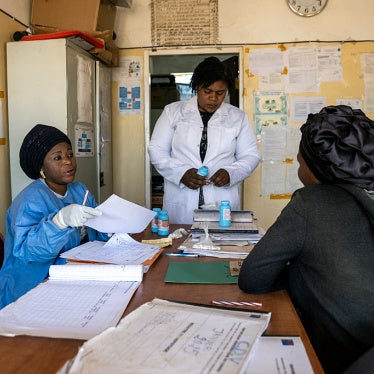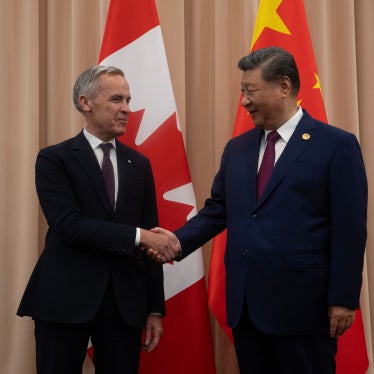On April 10, the people of Nepal voted to elect representatives to a constituent assembly which will write a new constitution and decide what future role—if any—the monarchy will have. Preliminary results show that the Communist Party of Nepal (Maoist) (CPN-M) is leading in almost half of the seats where counting has begun. Leader Pushpa Kamal Dahal, adorned in marigold garlands, vermilion smeared on forehead, has already made a victory speech, promising to “lead the country towards lasting peace based on a new ideology.” This is a promise that Nepalis most desperately hope he will keep.
For over a decade, Nepalis had only seen a grainy picture of Pushpa Kamal Dahal, better known as Prachanda, the “fierce one,” as he led the People’s Liberation Army, the CPN-M’s military wing, in a violent campaign, fighting for the rights of the downtrodden. He launched an armed rebellion on Feb. 13, 1996, just six years after a people’s movement had dislodged the monarchy to make way for multi-party democracy. Nepal’s experiment with democracy in the 1990s, wounded by corruption and infighting among the political leadership, fell apart due to the Maoist insurgency. On Feb.1, 2005, King Gyanendra, claiming that the democratically elected leadership had failed to address the Maoist threat, assumed all executive control and suspended most civil rights.
The King’s coup finally forced the Maoists to choose peace. The Maoists joined forces with mainstream political parties in a November 2005 pact to oust the king. The Maoists agreed to participate in multi-party democracy and joined another people’s movement to depose the King. In April 2006, King Gyanendra restored the civilian government after more than 200,000 people took to the streets in Kathmandu.
On Nov. 21, 2006, Nepal’s coalition government and the Maoists signed a truce accord to hold elections so that the representatives could rewrite the country’s constitution, including whether it will remain a monarchy. The Nepali Army and Maoists agreed to an arms management pact, under which each side would put away most of its weapons and restrict most troops to a few barracks, under the supervision of United Nations monitors.
Although the accord faltered at times—elections to the constituent assembly were postponed twice before the April 10 vote—it holds the promise for lasting peace. The comprehensive peace agreement includes a commitment by seven major political parties, and the CPN-M, “to create an atmosphere where the Nepali people can enjoy their civil, political, economic, social and cultural rights and … to ensuring that such rights are not violated under any circumstances in the future.”
During the armed conflict, both government security forces and the Maoists committed numerous serious human rights abuses. Government forces conducted summary executions, torture, arbitrary arrests and “disappearances.” The Maoists were responsible for political killings, abductions, extortion, recruitment of children into their forces, and persecution of political opponents. Police and prosecutors have done little to investigate these allegations, and prosecute the perpetrators.
Now that the general elections are over, the winners must put bringing to justice those who committed grave human rights abuses at the top of the political agenda. Members of the police and army and Maoist cadre who committed serious abuses must be held accountable.
The new government will need to address the country’s immense economic problems. The Maoist armed struggle found a following because of their demand for a more equitable distribution of resources so that the small feudal elite could no longer force the vast majority of Nepal’s people—most of them extremely poor—into invisibility.
Severe fractures still remain in Nepal’s post-conflict society. The Dalits and ethnic groups such as the Madeshis of the Terai plains expect equal rights and an end to discrimination, yet find themselves still inadequately represented in government jobs and other state benefits. Families of nearly 600 Nepalis “disappeared” at the hands of security forces or Maoists are anxiously hoping to know the fate of their loved ones, and for the perpetrators of such crimes to be brought to justice. And above all, Nepali leaders have to address the fact that the conflict has encouraged and spread a culture of intimidation and violence, whether in the Terai by Madehsi armed groups, or by political groups such as the Youth Communist League.
At least 20 people were killed and scores injured in the weeks leading up to the April 10 vote. Impartial observers expressed concern about pre-election intimidation of voters and candidates, most such incidents were attributed to Prachanda’s Maoist cadres. The election itself however, seemed to international observers to be “broadly credible.” The European Union’s Election Observation Mission said the polling was overall smooth “despite a limited number of cases of violence and attempts to disrupt the poll leading to the cancellation of voting in some polling stations.”
Prachanda has promised a lasting peace under a new ideology. Lasting peace will only come if Nepal’s leaders finally put an end to the use of threats, extortion and killings—methods that he once propagated— to get their way.
Meenakshi Ganguly is a senior researcher on South Asia for Human Rights Watch.






